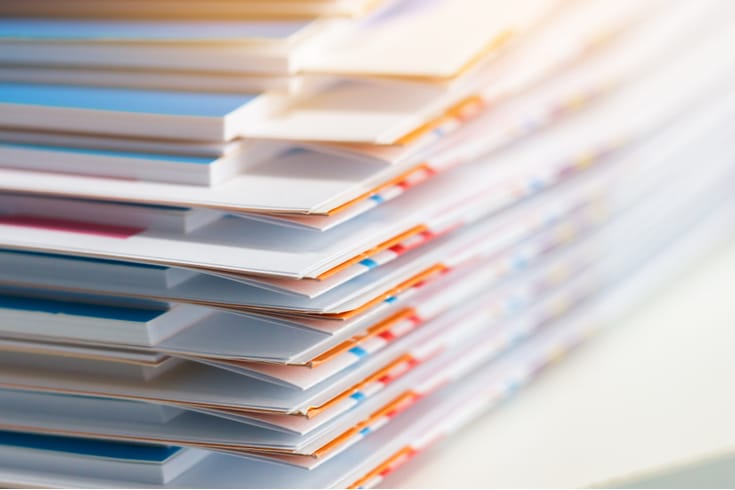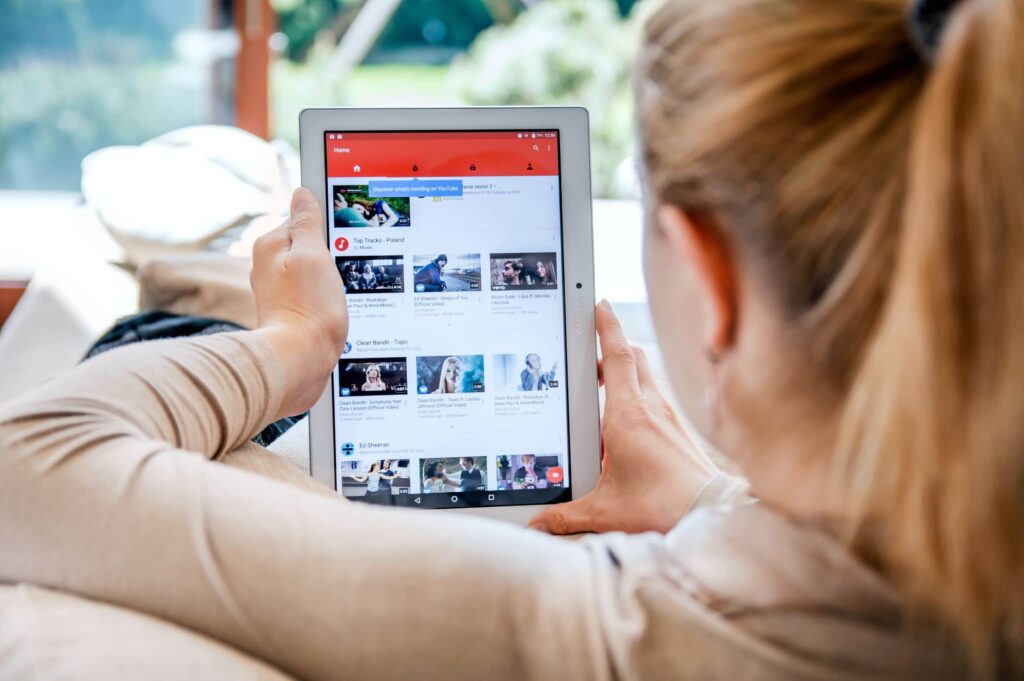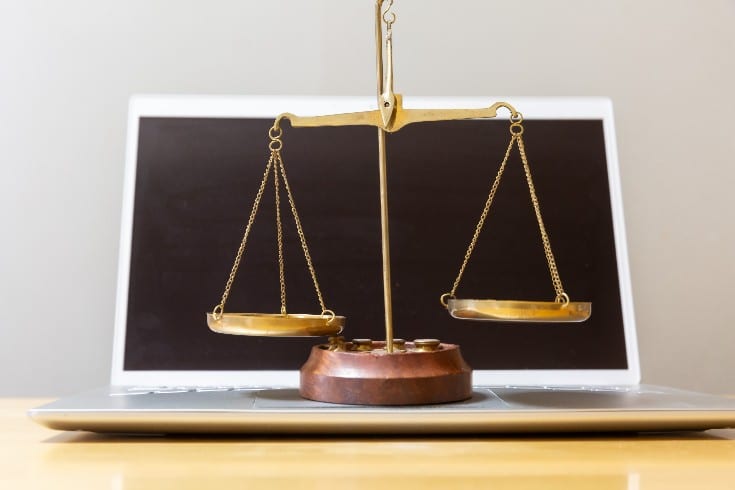Does Copyright Exist in Documents Published by Government Agencies? Explaining Points to Note When Using Them

Government agencies refer to the offices of the national and local public bodies, including central ministries, courts, and the Diet. A vast amount of documents are created and published in these government agencies. The creation of these documents is a public duty, carried out by civil servants, and funded by taxpayers’ money. So, do we, as taxpayers, have the right to freely use these documents?
In this article, we will explain the relationship between the use of documents published by government agencies and copyright.
Government Agency Works
No matter who the creator is, the general principle is that copyright arises in a work.
However, one of the main purposes of documents created by government agencies is to widely inform the public of the current situation and to allow the public to utilize the information compiled in the documents in their daily lives.
For example, the “Japanese National Livelihood Survey” is a large-scale survey conducted every three years by the Ministry of Health, Labour and Welfare on fundamental matters of national life such as health, medical care, welfare, pensions, and income. It would be unreasonable and inappropriate to allow the Ministry of Health, Labour and Welfare to monopolize the results of such surveys.
The Copyright Act states its purpose as,
“This law aims to define the rights of authors and rights related to performances, records, broadcasts, and cable broadcasts, and while paying attention to the fair use of these cultural properties, to protect the rights of authors and others, and thereby contribute to the development of culture.”
Article 1 of the Copyright Act (Purpose)
However, Article 13 of the Copyright Act stipulates that certain documents created by government agencies do not fall under the purpose of copyright.
The following works cannot be the subject of rights under the provisions of this chapter.
1 The Constitution and other laws
2 Notices, instructions, directives, and other similar items issued by the organs of the state or local public entities, independent administrative agencies (abbreviated) or local independent administrative agencies (abbreviated)
3 Judgments, decisions, orders, and rulings of courts, and decisions and rulings of administrative agencies that are made by procedures equivalent to trials
4 Translations and compilations of the items listed in the preceding three items, created by the organs of the state or local public entities, independent administrative agencies or local independent administrative agencies
Article 13 of the Copyright Act (Works not subject to rights)
As listed above.
In this article, we have quoted Articles 1 and 13 of the Copyright Act, and in various articles on our site, we have quoted many court decisions and survey materials from government agencies, and used them to explain the articles. Since they are not subject to copyright, you will not be accused of copyright infringement or be claimed for damages.

Cases Where Works Can Be Reproduced Without Permission
Documents published by government agencies, other than those deemed “not the subject of rights” under Article 13 of the Japanese Copyright Law, are protected as copyrighted works. However, there may be cases where the reproduction, modification, and publication of copyrighted works do not constitute copyright infringement, depending on the circumstances and purposes.
The cases where copyright is limited are detailed in Articles 30 to 47-8 of the Japanese Copyright Law.
The reason for defining the cases where copyright is limited is that if every time one wants to use a copyrighted work, they have to obtain permission from the copyright holder and pay a usage fee if necessary, it could hinder the fair and smooth use of copyrighted works, which are cultural assets, and could potentially contradict the purpose of the copyright system, which aims to contribute to cultural development. Examples of this include:
- Reproduction for private use (Article 30)
- Reproduction in libraries, etc. (Article 31)
- Publication in textbooks, etc. (Article 33)
- Reproduction for examination questions (Article 36)
- Performance not for profit (Article 38)
- Reproduction of editorials on current affairs (Article 39)
- Use of publicly displayed works of art, etc. (Article 46)
Among these, the “quotation of published works (Article 32, Paragraph 1)” allows the use of copyrighted works within a reasonable range as a “quotation”.
Furthermore, even if it is not a lawful quotation, the Japanese Copyright Law allows the reproduction of certain government works under specified rules in Article 32, Paragraph 2, promoting the smooth use of works created by government agencies.
Public relations materials, statistical survey materials, reports, and other similar works created by national or local public entities, independent administrative agencies, or local independent administrative agencies for the purpose of making them widely known to the public, and published under the name of their author, can be reproduced in newspapers, magazines, and other publications as explanatory materials. However, this does not apply if there is a notice prohibiting such reproduction.
Japanese Copyright Law Article 32, Paragraph 2
Examples of works that can be reproduced include white papers issued by the government (Energy White Paper, Nuclear Power White Paper, Disaster Prevention White Paper, etc.), various reports (annual reports, awareness survey reports, etc.). This applies to works created “for the purpose of making them widely known to the public”, so reports created as internal documents do not fall under this category. Also, materials created and submitted by experts at expert meetings are the copyrighted works of those experts.
Furthermore, it states that works can be reproduced “as explanatory materials”, so even if they are works of government agencies, they cannot be reproduced in their entirety, and such reproduction is not permitted.
Moreover, if there is a notice prohibiting reproduction (no-reproduction notice), you are not allowed to reproduce the work without the copyright holder’s permission. Of course, even if there is a no-reproduction notice, you can quote the work if you meet the legal requirements.
When reproducing a work, according to Article 48 of the Japanese Copyright Law, “the source of the work must be clearly indicated in a manner and to an extent deemed reasonable according to the manner of its reproduction or use.”

Information Posted on Government Agency Websites
Is it permissible to freely use the information posted on government agency websites?
Among the materials posted on government agency websites, those that fall under Article 13 of the Japanese Copyright Law, “Works not subject to rights,” can be freely used. But what about the rest?
Most government agency websites have similar statements regarding the handling of copyrighted materials, and they seem to follow a standard template. For example, under the “About Copyright” section of the Ministry of Internal Affairs and Communications’ “About Our Website,” it states:
The information (hereinafter referred to as “content”) published on our website can be freely used by anyone in accordance with the following 1-7, including reproduction, public transmission, translation, adaptation, etc. Commercial use is also possible. Furthermore, numerical data, simple tables, graphs, etc. are not subject to copyright, so they are not subject to these usage rules and can be freely used.
And 1-7 refers to:
1. “About Citing Sources” requires that the source be cited when using the content.
2. “Please Do Not Infringe on the Rights of Third Parties” indicates that there may be cases where third parties hold copyright or other rights to the content.
3. “About Content with Usage Restrictions Due to Individual Laws” gives the example of “restrictions on the use of political party subsidy reports based on the Political Party Subsidy Act.”
4. “About Content to Which These Usage Rules Do Not Apply” lists “symbol marks, logos, personality designs representing organizations or specific businesses” as examples of content not subject to these usage rules.
5. “About Governing Law and Agreed Jurisdiction” and 6. “About Disclaimer” are standard content.
7. “Others” states, “These usage rules do not restrict the use of quotations and other uses permitted under copyright law.”
While the content is almost the same on all government agency websites, and it is stated that public transmission can be freely done, which allows for web posting, it is important to note that not all materials posted on government agency websites are copyrighted by the agency, so caution is necessary.

Summary: Be aware of the Rules in Using Government Published Documents
Government agencies do not necessarily relinquish the copyright of the documents they create. Therefore, there are certain rules for their use. It is important to be aware of these rules and utilize various white papers, demographic statistics, reports, Japanese laws and regulations, and court decisions.
Introduction to Our Firm’s Measures
Monolith Law Office is a legal office with high expertise in both IT, particularly the Internet, and law. In recent years, intellectual property rights surrounding copyrights have been attracting attention, and the need for legal checks is increasingly growing. Our firm provides solutions related to intellectual property.
Category: Internet





















